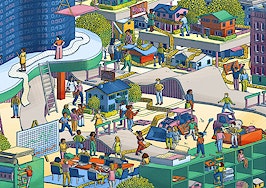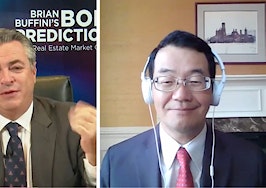Be the smartest person in the room. Join us and thousands of real estate pros, virtually, for Connect Now today to stay ahead of the game and make new connections. Listen on the go, or pop your camera on to say hello. Plus, get access to the replays. Register now.
From the sustainability of home price growth to home affordability issues and regulatory challenges, the coming years hold big unanswered questions for the real estate industry.
Brad Inman, founder of Inman News, discussed these and a wide range of other topics with reporters Marian McPherson, Andrea V. Brambila and Jim Dalrymple II during a recent Connect Now virtual session.
Inman set out for a candid conversation on the market, where it’s been in recent years, and where it might be heading.
“There’s a lot of cheerleaders, I say, but not a lot of leaders — cheerleading for the market being great,” Inman said.
Here are some takeaways from that discussion.
DOJ vs. NAR
The Department of Justice has been playing hardball with the National Association of Realtors on various real estate practices, and the outcome of this process could have potentially big consequences for the entire industry.
“There’s an old saying: If the federal government wants you, they will get you,” Inman said. “But they’re stacked against the most powerful trade group, NAR.”
Throughout this saga, Brambila has reported on the legal proceedings and how they’re already moving industry practices in a new direction.
“There’s already been changes from this whole thing with NAR and DOJ,” Brambila said. “Even though the DOJ pulled out of the settlement that was announced a year ago, NAR has already changed its rules.”
These rule changes included requiring buyer commissions to be displayed on websites, banning buyer’s agents from claiming their services are free, and preventing agents and brokers from filtering listings by commission or name.
But the government may not stop there.
The DOJ remains in hot pursuit of NAR, and Brambila says there are many competing theories of where things will end up — from relatively small tweaks to industry disclosures to big, sweeping changes with implications for MLSs and more.
“I think we’re probably going to end up somewhere in the middle,” Brambila said.
The ‘great reshuffling’ and race
The rise of remote work during the pandemic has allowed some Americans to move to more affordable areas of the country.
Data from Zillow has shown that out-of-town movers typically left cities for suburbs, or suburbs for more rural areas — where homes are often larger and cost-of-living is lower.
Inman asked for thoughts on this trend, fueled by remote work, and whether it might exacerbate racial inequality in housing.
McPherson, whose reporting has often touched on how issues of race and class play out in the real estate market, said the benefits of remote work have not been felt equally by all.
“I personally think about people in my circle and friends who would love that opportunity,” McPherson said. “But for a lot of young, Black professionals, for example, they don’t have the resources and opportunities to do that.”
While this migration may not be primarily racially motivated, Dalrymple said, the reality is that areas with expensive housing are often cities, and more affordable areas that people are moving to are often less racially and ethnically diverse.
This presents issues that Inman will continue to cover, McPherson said.
“I think there’s one thing that people need to realize: You can’t take race and class out of real estate because it’s the main way people build wealth,” McPherson said.
Where things go from here
While markets have slowed down, agents Dalrymple has spoken with haven’t seen a huge decline in homebuying demand — at least not yet.
“Overall, the takeaway is that the market is still strong,” Dalrymple said. “But folks have been talking to me about seeing properties sit a little bit longer, bidding wars being a little less competitive.”
Part of this is due to fundamentals of the market. The number of homes on the market has been declining for years, and not enough new homes have been built to replace demand. That shortage could take a while to sort out, Brambila said.
“I think because of the inventory shortage which has been going on for pretty much a decade, prices are still going to stay high,” Brambila said.
This could produce issues for younger, would-be homebuyers who are becoming increasingly disenchanted with their prospects, Dalrymple said.
“Millennials have experienced wage stagnation,” Dalrymple said. “Now they’re experiencing inflation that’s sort of undercutting their savings.”
But while agents may hold doubts about what the distant future looks like, some that McPherson spoke with aren’t too worried for the time being.
“I feel like there’s a cautious optimism, especially about the upcoming year,” McPherson said.





